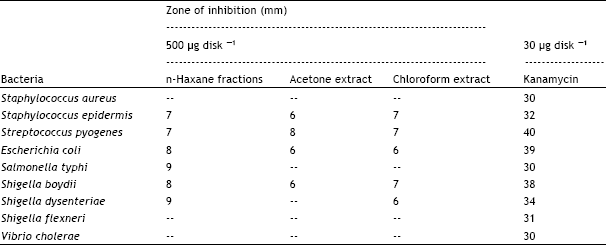Research Article
Antibacterial Activity of Cordyline terminalis Kunth. Leaves
Pharmacy Discipline, Khulna University, Khulna-9208, Bangladesh
Prabir K. Das
Pharmacy Discipline, Khulna University, Khulna-9208, Bangladesh
M. Amirul Islam
Pharmacy Discipline, Khulna University, Khulna-9208, Bangladesh
K. M. Rahman
Pharmacy Discipline, Khulna University, Khulna-9208, Bangladesh
Md. Mustafizur Rahman
Pharmacy Discipline, Khulna University, Khulna-9208, Bangladesh
M. S. T. Selim
Pharmacy Discipline, Khulna University, Khulna-9208, Bangladesh











